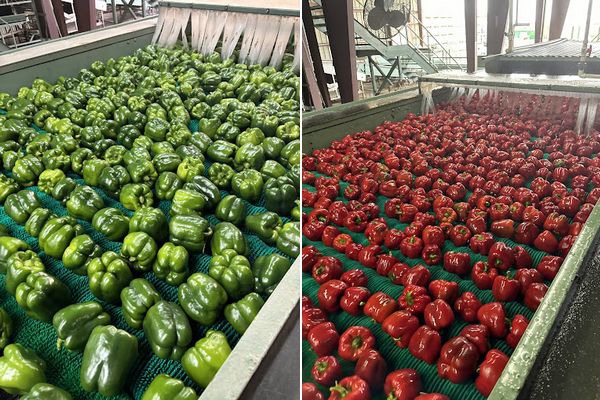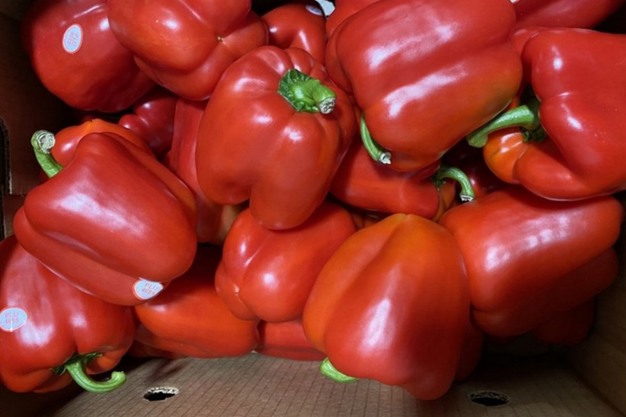Pricing on field bell peppers is anticipated to stay strong thanks to a variety of developments in pepper-growing regions.
California: Production out in California has been impacted negatively by very warm temperatures. "They just had another heat wave that affected the northern pepper fields and the coastal pepper fields," says Neil Mazal of East Coast Farms & Vegetables. "With the warmth, the plants are stressed so the fruit doesn't come on as quickly or has as good quality as they would normally expect. Instead, you wind up with either some stunted plants or a few days after harvest, there is some shrivel in the pepper which is challenging."
Local production: More locally, states such as Tennessee have pepper and there is some in North Carolina as well. Meanwhile, regions such as Michigan, New York, and New Jersey are cleaning up their production.

Canada: There have been a few issues for fields with Canada, including cooler temperatures and rain that have flooded some fields.
In greenhouse production, fusarium has infected some greenhouses, creating a major issue for the entire season for greenhouse peppers and limiting the supply of colored peppers. "A lot of people will go into the greenhouses and pick them green to catch a good market. So when we had the mid-$20 range pepper market, if they had pepper, they would have picked them. However they didn't have it," said Mazal.
In turn, colored peppers were being sourced instead out of The Netherlands and flown into entry points such as Miami to meet a good market.
Mexico: "Mexico has started picking some volume on colored pepper. That market is starting to decline," says Mazal. "The red pepper market in particular has leveled out and some of the smallest-sized fruit is trading at competitive pricing. We've seen $14.00 and $12.00 FOB."
Georgia: While Georgia has started picking field crops such as squash, eggplant, and cucumbers, until the region starts with bell peppers, the market is anticipated to hold on.

As for pricing, Mazal anticipates pricing for Jumbo double X, single X pepper to stay between $16-$18 FOB; large pepper, $12-$14; and choice pepper, $10-$12 with people mostly trying to hold on to $12. "Some suntan and mixed red pepper are trading at a little less now that we're getting into older fields where there's more maturity," says Mazal. "Before this, there was very little suntan pepper because people were caught up to the crop."
What is impacting pricing significantly are freight costs. "Trucks coming to Florida have been extremely high in price because there are no backhauls. Trucks going elsewhere have been less costly because there are backhauls," says Mazal. "Getting product into the state, fuel costs and other costs for transportation continue to be elevated due to inflation and there's no backtracking on that. The produce industry has to recognize that fact."
He sees the impact of those strong freight prices on commodities such as squash–an item that's been considered low-value as a 30-day crop and was generally low-priced to match. "Because of ancillary costs, yellow squash is trading as high as $18 on fancy; $16 on medium; zucchini trading at $12 fancy or $10 in Georgia," he says. "Normally you'd be seeing zucchini at $5 or $6 at this time of year as Georgia starts to improve supply."
 For more information:
For more information:
Neil Mazal
East Coast Farms & Vegetables
Tel.: +1 (561) 286-0286
[email protected]
https://www.eastcoastfarms.us/










